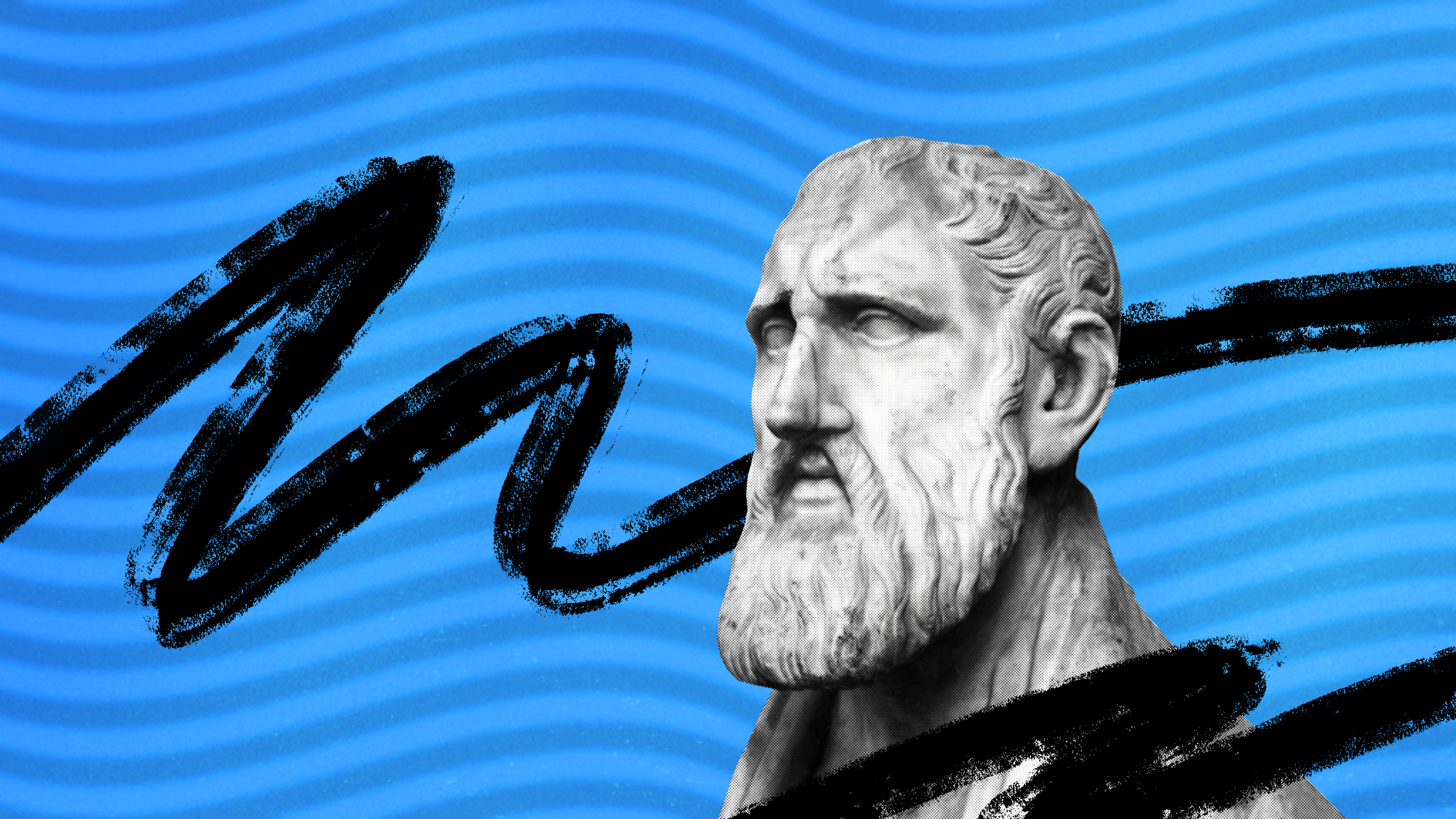4 of the hardest unsolved problems in philosophy — and some possible solutions

- Philosophy has been around for a long time, and some of the big problems it tackles remain unresolved.
- Indeed, some problems might be beyond human understanding.
- This article covers four major questions that have stumped philosophers for millennia.
Philosophy has come a long way since Thales argued the universe was made of water. Philosophers have produced new ideas that enrich the world around us, give us a better understanding of the universe we live in, and help us find the good life. However, philosophy is often more about the questions and methods than the answers — and in some cases, old problems remain unanswered.
Here, we look at four unsolved problems in philosophy and for each we ask these questions: Why is the problem so difficult? And why are the proposed solutions so unsatisfying?
The hard problem of consciousness
The hard problem of consciousness asks why any physical state creates conscious mental states at all. While we can understand physical systems very well, the hard problem goes further than merely asking “how” questions: “Why is the performance of these functions accompanied by experience?” For example, we can understand how our bodies physically feel pain, but why those physical reactions create the personal, subjective experience we call pain is unsolved.
Not all philosophers are ready to accept that chairs can have experiences.
While variations of this problem go back centuries in European, Indian, and Chinese philosophy, the current version of the problem (quoted above) was written by Australian philosopher David Chalmers in 1995. Several theories have been put forth or dusted off as possible solutions. None of them have proven decisive.
“Weak reductionists” argue that consciousness is a phenomenon that cannot be broken down into more basic, non-conscious parts but that it can also be identified with physical activity if science backs it up. In other words, if a physical event causes brain states that reliably cause mental states to happen, then it can be argued that the brain state and the mental state are the same thing. While it has a certain simplicity, this solution avoids the problem of why (physical) brain states differ from all other physical states, in that they directly cause mental states.
Some philosophers have argued for panpsychism, the idea that everything is at least a little conscious. If this view is correct, then all matter has consciousness or the potential for consciousness as an inherent part of being matter. The “why” in the problem becomes less concerning after that. However, the idea that everything is at least capable of consciousness is an unintuitive one, and not all philosophers are ready to accept that chairs can have experiences.
Then there is the so-called “mysterian” proposition, that the problem is currently unsolvable and is perhaps permanently so for human beings. Philosopher Colin McGinn argues for the permanently unsolvable stance, holding that our minds are not built to answer the question. Thomas Nagel is more optimistic, arguing that science might get to a point where it could address the problem.
As with many philosophical issues, there isn’t complete agreement that the problem even exists. In a 2020 survey, 29.7% of philosophers held the hard problem didn’t exist; 62.4% agreed that it did exist.
Why is there something rather than nothing?
The fundamental problem of metaphysics, argued Martin Heidegger, was why there was anything at all rather than nothing. After all, most people expect that when something exists there is a cause for it. If that’s true, then what caused reality? Even wrapping your head around this problem can be difficult. Perhaps we shouldn’t be surprised that solving it definitively has, thus far, proven impossible.
Parmenides, an ancient Greek philosopher who influenced Plato, argued that “nothing” was an impossibility. “Something” has to exist by definition. His view that there is no empty space enjoys some support from modern science.
David Hume suggested that our ideas about things needing causes came less from scientific evidence and more from our experience that everything we interact with has causes. As such, this tendency might not apply to the universe as a whole. While the idea that the universe just happened to happen does have support, it is an unsatisfying answer.
Robert Nozick, most famous for his political philosophy, made several suggestions. Among them, he proposed there might be multiple universes — including ones where nothing exists. He also posited that “nothing” could be a possibility but that the probability of it was much less than that of “something” existing.
Bertrand Russell took a related view, accepting the existence of the universe as a “brute fact” which could not be explained by other information. His view is not uncommon. As explained by Roy Sorensen of the University of Texas-Austin, some philosophers find the question absolutely unanswerable.
The Ship of Theseus
This problem — which dates back at least to the time of Plutarch (1st century AD) — addresses questions of identity and is still cited during modern debates about the philosophy of mind.
The story behind this problem is well known. The Athenians decide to maintain the trireme (an ancient galley) used by their founder and hero-king, Theseus, after he escaped the Labyrinth with the youth of Athens. As the parts on the ship break down, they are replaced, one at a time. At what point does the vessel stop being the ship of Theseus and start being another ship? A later twist asks what happens if the old parts are saved and later used to make yet another ship. Which one is the real ship of Theseus?
Philosopher David Lewis argued that different parts of objects exist at different times. In this case, the ship is a certain age and occupies a given space. Its mast, which may be much younger, occupies a certain part of that space for a limited time. The objects exist in both space and time. This allows philosophers to say that the different parts are all distinct in time. While this avoids the problem of saying one object is in two places at the same time or that two objects defy time and somehow overlap in one place, it does sometimes require a lot of temporal objects to come into existence to explain what’s going on.
Another solution, held by Ryan Wasserman to be the most common answer, is that the ship is a different object from the material that it is made of — even if those two things are in the same place at the same time. While this does directly address the problem of the ship being the same as its parts, it requires us to accept that two different objects — the ship and the things it is made out of — are in the same place at the same time.
Noam Chomsky argues that the problem comes from the common assumption that what is true in our minds is also true in the world — a position called externalism. As such, he suggests the puzzle addresses issues about how our minds work but doesn’t tell us a thing about relative sameness of the ship. While this view is popular in some cognitive science circles, it also doesn’t solve the problem.
The demarcation problem
The question of how to distinguish science from non-science goes back to at least Socrates (5th century BC). Beyond its philosophical importance, the question often finds its way into court cases. Defining what counts as science, philosophy, or any other meaningful field of study and what counts as nonsense seems easy. The trouble is, as Socrates pointed out, it is rather difficult to find an answer that works without also being an expert in every field you want to analyze. Despite this difficulty, modern philosophy has put forward some strong possible solutions.
Thomas Kuhn argued that science is defined by “paradigms” within which scientists work and implicitly agree on. Anything that fits inside the paradigm is “science,” and that which is outside it is not. Paradigms do not have to be perfect: Newtonian physics was the dominant paradigm for centuries despite unresolved problems. As these problems multiplied, Einsteinian physics began to dominate. Most of the time, scientists are “puzzle solvers” working on problems within a given paradigm. It is only right before a paradigm shift, Kuhn suggested, that they actively start to work on the major problems. Many have supported Kuhn’s ideas, which have proven useful in the social sciences. On the other hand, his ideas are often critiqued as relativistic.
Karl Popper argued that science is marked by falsification. A scientific theory, like general relativity, will make predictions that can be shown to be false. In Einstein’s case, one prediction was that gravity would bend light in ways that could be detected by telescopes. Popper argued that pseudoscience, on the other hand, cannot be disproved. He pointed to psychoanalysis and the Marxist theory of history as examples. No matter what data you provide, those theories always seem to be correct.
While this view is popular and quite useful, there are critiques of it. Importantly, anything that makes a claim that can be falsified could be counted as a science.
A more recent theory put forward by Victor Moberger centers on the bluntly expressed notion of bullshit. Essentially, bullshit is a lack of concern for truth. Pseudoscience and pseudophilosophy are defined by that lack of concern. For example, while the idea that the Earth is flat has long been debunked, many of the people pushing it are unconcerned with facts, logic, or evidence. The same can be said for a number of other pseudosciences.
This theory is new (2020) and widely discussed. Although it takes a broad view, it tends to focus on the character of the people making the claims, which seems irrelevant for deciding what science is.





